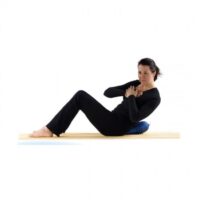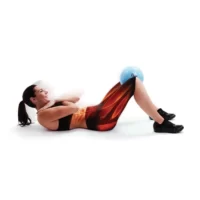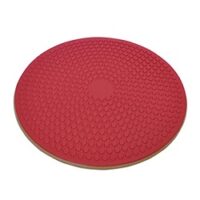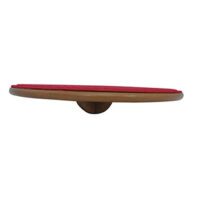Physiotherapy Group Exercise
Article by Erin Hickey
Physiotherapy Group Exercise Classes
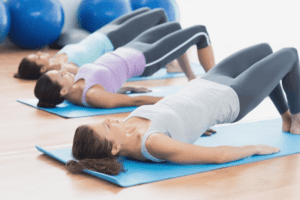
Clinical Physiotherapy Group Classes
PhysioWorks Clinical Physiotherapy Group Classes offer a unique blend of traditional Pilates and evidence-based rehabilitative exercises. These classes, conducted by Erin Hickey, a skilled physiotherapist with certification in both Pilates and physiotherapy, are mat-based and tailor-made to meet each individual’s rehabilitation goals. They effectively target specific injuries, enhance posture, and improve overall well-being.
Personalised and Evidence-Based Approach
Individualised Attention
Our classes, led by Erin Hickey, start with a comprehensive musculoskeletal assessment. This personalised approach ensures that each participant receives exercises tailored to their unique needs, enabling safer and more effective progress.
Research-Driven Methodology
As physiotherapists, we stay abreast of the latest research to integrate the most effective exercises into our classes. This evidence-based approach ensures optimal outcomes for participants.
Muscle Activation and Retraining
Injuries and pain can disrupt muscle function. We may use Real-Time Ultrasound in our initial assessments to ensure core muscles activate correctly, aiding in effective recovery.
Inclusivity and Versatility
Accommodating Diverse Needs
Our Clinical Physiotherapy Group Classes cater to various fitness levels and physical abilities. From athletes to seniors, we offer customised programs to suit everyone’s needs.
Core Strength and Posture Enhancement
These classes focus on strengthening the deep abdominal, pelvic, and back muscles. Improved core stability translates to better posture, reduced back pain, and enhanced movement.
Addressing Specific Health Concerns
Comprehensive Rehabilitation
Our classes are an excellent rehabilitation tool, addressing a range of conditions from chronic pain to post-surgery recovery. We focus on preventing injuries while promoting overall physical well-being.
Beneficial for Various Conditions
We tailor our classes to benefit those with many health conditions, including:
- Low Back Pain
- Neck Pain
- Postural Issues
- Pelvic Floor Issues
- Osteoporosis
- Ageing and Balance
- Sports Injuries
- Pregnancy and Post-Partum
- Post-surgical rehabilitation
- Preventative purposes to improve strength and stability
Suitability and Assessment
Who Can Benefit?
Clinical Physiotherapy Group Classes suit most people, from teenagers to the elderly. Whether you’re dealing with musculoskeletal issues, looking for general fitness, or recovering from an injury, these classes can help.
Initial Assessment and Tailored Classes
Erin conducts a thorough initial assessment to ensure safety and suitability. Based on this, we design semi-private classes that align with your personal goals.
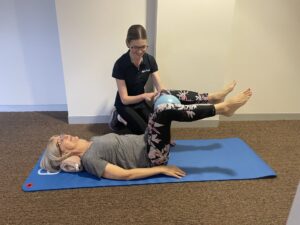
Class Timetable and Booking
Join our classes at Sandgate and Clayfield at convenient times throughout the week. Book now to start your journey towards better health and fitness.
- Monday evenings: 6:15 – 7:00 pm
- Wednesday mornings: 8:00 – 8:45 am
- Thursday evenings: 6:15 – 7:00 pm
- Tuesday mornings from 9:30-10:15am
Conclusion: Your Path to Better Health
Clinical Physiotherapy Group Classes are more than just exercise sessions; they’re a pathway to improved health and wellbeing. Under the guidance of our expert physiotherapists, you’ll achieve your fitness and rehabilitation goals in a supportive, effective environment.
Call to Action
Don’t wait to take control of your health. Contact PhysioWorks today to book your assessment and find the right Clinical Physiotherapy Group Class for you!
Book Your Clinical Physiotherapy Group Class Now!
More info: Clayfield PhysioWorks Clinic Webpage
Related Articles
- Benefits of Pilates for Rehabilitation – Readers will discover how Pilates-based exercises can aid in rehabilitating injuries and improving physical health.
- Managing Low Back Pain with Physiotherapy – This article likely explains the role of physiotherapy in alleviating low back pain through specific exercises.
- Improving Posture with Clinical Physiotherapy – Details on how clinical physiotherapy can enhance posture and reduce the risk of related musculoskeletal issues.
- Pelvic Floor Strengthening Exercises – Offers insights into exercises that target the pelvic floor, which are beneficial for various conditions, including post-partum recovery.
- Osteoporosis: Physiotherapy Management and Exercise – Readers can learn about the importance of physiotherapy in managing osteoporosis through exercise.
- Preventing Sports Injuries with Targeted Exercise – This article likely discusses how physiotherapy group classes can help athletes prevent injuries through specific exercises.
- Physiotherapy for Ageing and Balance – Offers advice on how older adults can use physiotherapy to maintain balance and prevent falls.
- Post-Surgical Rehabilitation: How Physiotherapy Can Help – Explains the role of physiotherapy in recovery after surgery, focusing on exercises that aid in regaining strength and mobility.
- Neck Pain Relief through Physiotherapy – Details the approaches used in physiotherapy to relieve neck pain and improve function.
- The Role of Real-Time Ultrasound in Physiotherapy Assessments – Provides information on how Real-Time Ultrasound is used in physiotherapy for assessing muscle function and guiding rehabilitation exercises.



